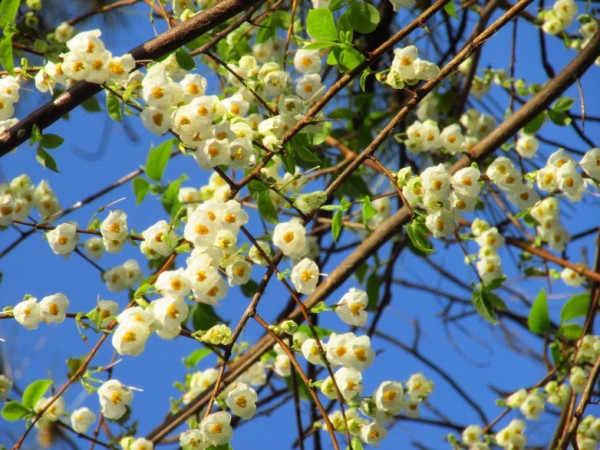 The Silverbell trees, known to the botanists as Halesia tetraptera, are now in bloom.
The Silverbell trees, known to the botanists as Halesia tetraptera, are now in bloom.
This small native tree was first collected in the summer of 1755 by the eminent Scottish physician and naturalist Alexander Garden who Linnaeus has memorialized in the genus name of Gardenia. He lived for many years in the city of Charleston, S.C., but when the hostilities with Great Britain forced men to declare as patriots or loyalists he, regrettably, chose to remain loyal to that tyrant George III and his minion Lord North, and was henceforth driven from the country.
In more recent times, this lovely little tree may be a clue to the location of the long lost home of John Clayton, the most famous of 18th-century Virginia botanists. Clayton was clerk of courts for nearby Gloucester County and kept his garden, and presumably a house, on the shore of the Piankatank River.
Clayton provided plants to Peter Collinson, a London merchant, who had the largest collection of North American plants in all of England in his garden at Mill Hill. In 1764, Collinson wrote a letter to Cadwallder Colden, then acting governor of New York, in which he remembered the many correspondents who had provided specimens for his collection.
Among his remembrances is this passage: “Those pretty Fringe Trees, Halesias and Stuartia all Great Beauties I must thank my Fr’d Mr. Clayton the Great Botanist of America.”
Several years ago my wife, Denise, a noted horticulturist and expert on native plants, was leading a group of ladies along the shore of the Piankatank River exploring the local flora when she found, within a narrow ravine, a stand of Silverbell trees. When she reported this find to me, I assured her that it must have been the similar Staphlyea she saw for the Silverbell tree is not known to grow on the coastal plain of Virginia.
Having been wed to this estimable woman for many years one would think that I would know better by now for when we returned to the ravine it was, indeed, populated with a dozen or more Silverbell trees.
Until this time, Silverbells had been recorded from only six counties in Virginia all located around Mount Rogers in the far western reaches of the state, over 300 miles away. Most intriguing, this ravine is directly below the ruins of the old clerk’s office where John Clayton conducted his business.
It is quite possible that what she found is the last remnant of John Clayton’s garden!

Leave a Reply